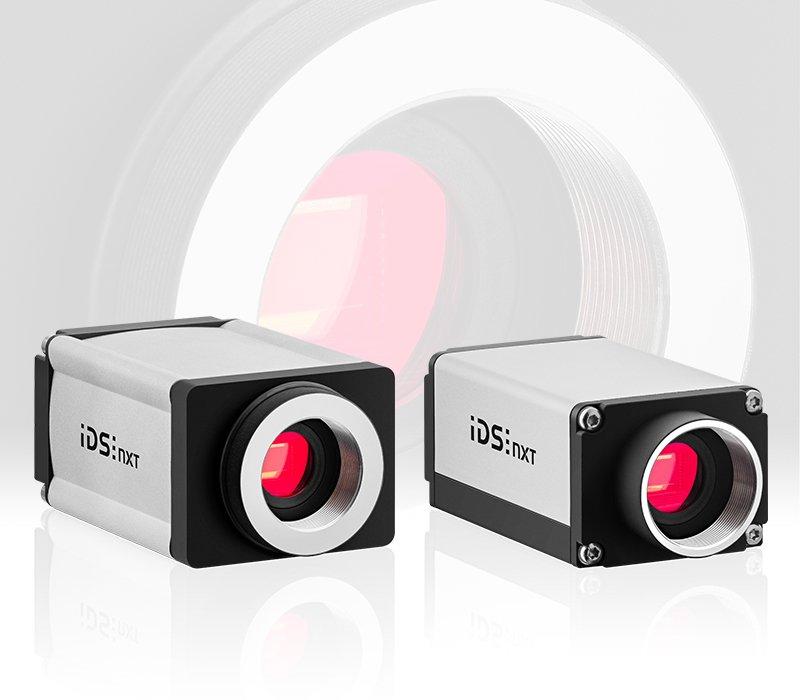Visitors to VISION can see for themselves the enormous potential of the IDS NXT vision app-based industrial cameras. The new IDS NXT rio & rome families are designed as intelligent cameras in the housing of standard industrial cameras. This approach combines the capabilities of both worlds: customers can use them as fully-fledged standard industrial cameras, or take advantage of extended, individually designed applications based on vision apps and on-camera neural networks.
For greater flexibility regarding 3D vision applications, the company presents a prototype of the new Ensenso XR series with on-board processing. Unlike the cameras of the N- and X-series, which require a host computer to calculate 3D point clouds, this model can calculate them itself and transmit the data via Ethernet or Wifi. The advantages include faster generation of these 3D point clouds, less strain on network bandwidth due to transmitting results and a reduced computing load on the host PC. This allows faster clock rates for bin picking, for example.
In addition, IDS presents the concept study of a 10 GigE camera family that could make best use of the potential of current sensors in terms of high resolution, fast frame rates and large bit depths. Depending on the available bandwidth and infrastructure, it automatically adapts its transmission speed to 5, 2.5 or 1 GigE. The company also plans to integrate Power-over-Ethernet (PoE), which means that a separate cable for the power supply is no longer required. The models could be particularly interesting for applications that could only be operated at a reduced bandwidth due to the limited bandwidth of "standard" GigE cameras.
Various demonstrations emphasize what the different products in the camera manufacturer’s portfolio are capable of. For example, IDS shows the new USB 3.1 Gen 1 board level cameras with liquid lens control. They facilitate image acquisition at variable object distances as their focus can be readjusted quickly and comfortably via user interface or API, even if the lens cannot be reached manually. The cameras are available with a 6.4 MP rolling shutter sensor from Sony or the highly photosensitive 18.1 MP rolling shutter sensor from ON Semiconductor, among other variants. They are equipped with S-Mount or CS-/C-Mount, twist-proof USB Type-C connection and practical USB power delivery.
The IDS team also provides GigE Vision camera prototypes with the 5 MP IMX250 Pregius CMOS sensor with integrated on-pixel polarizer from SONY. The polarization sensor provides better object detection in low contrast or reflective light and helps to visualize scratches on surfaces or stress distribution within transparent objects. The conversion of the on-pixel polarizers is already realized in the camera. As a result, the camera delivers the result image directly, CPU-intensive evaluations of the polarization on the host PC are not necessary.
he industrial camera manufacturer IDS Imaging Development Systems GmbH develops high-performance, easy-to-use USB, GigE and 3D cameras with a wide spectrum of sensors and variants. The almost unlimited range of applications covers multiple non-industrial and industrial sectors in the field of equipment, plant and mechanical engineering. In addition to the successful CMOS cameras, the company expands its portfolio with vision app-based cameras. The novel image processing platform IDS NXT is freely programmable and extremely versatile.
Since its foundation in 1997 as a two-man company, IDS has developed into an independent, ISO-certified family business with about 280 employees. The headquarters in Obersulm, Germany, is both a development and production site. With branches in the USA, Japan, South Korea and UK as well as other offices, IDS is represented internationally.
IDS Imaging Development Systems GmbH
Dimbacher Str. 10
74182 Obersulm
Telefon: +49 (7134) 96196-0
http://www.ids-imaging.de
Redakteurin Produktkommunikation
Telefon: +49 (7134) 96196-0
E-Mail: c.kirsch@ids-imaging.de
![]()
